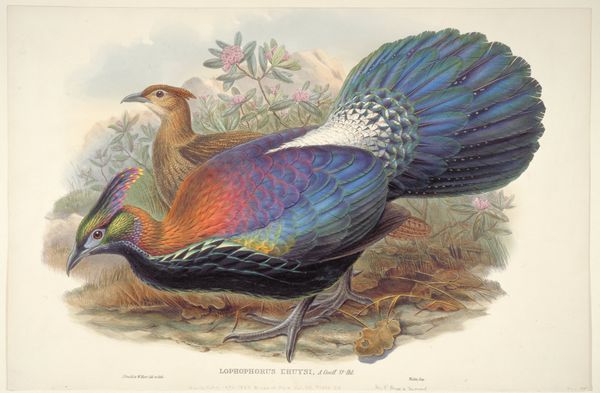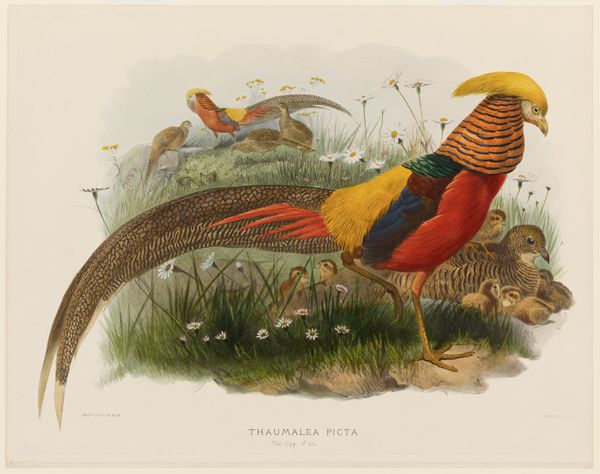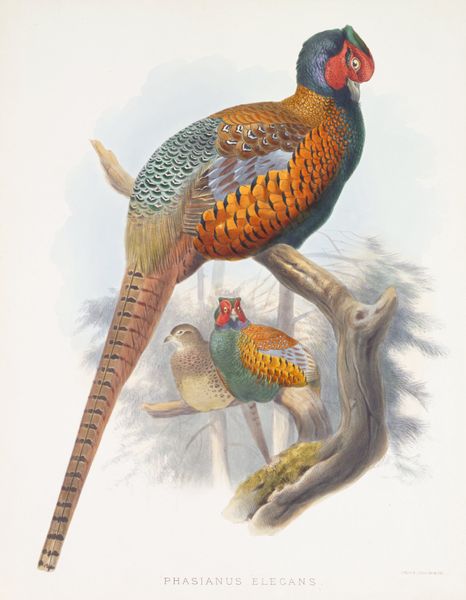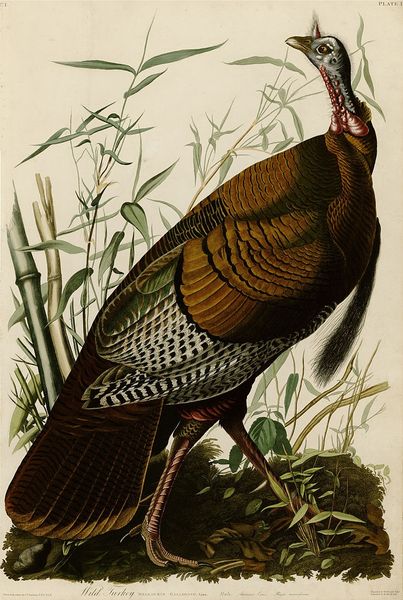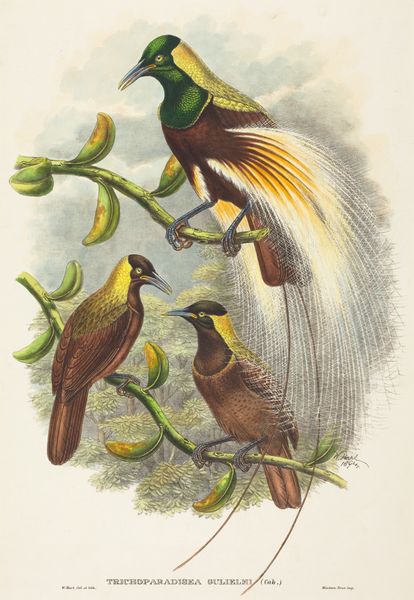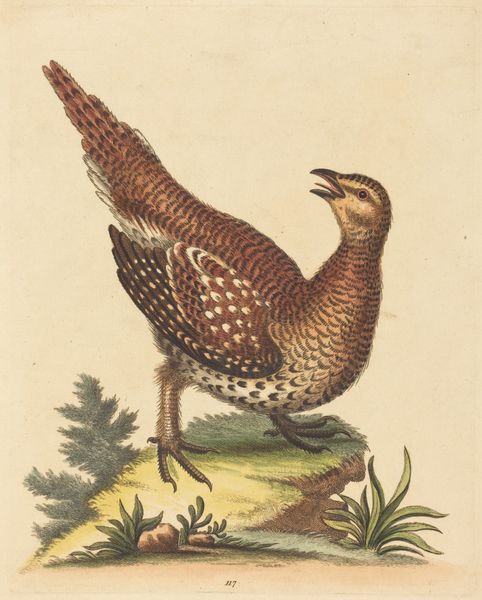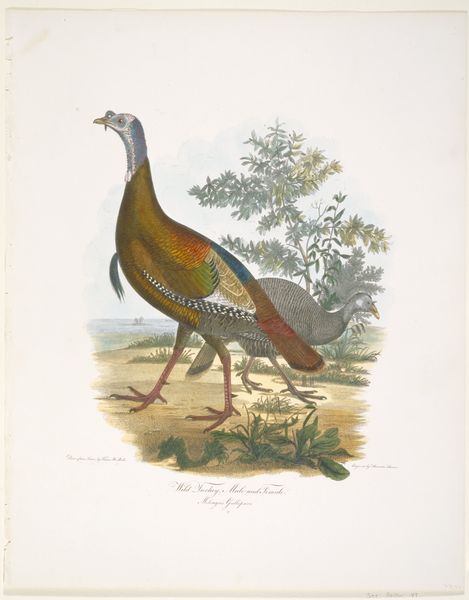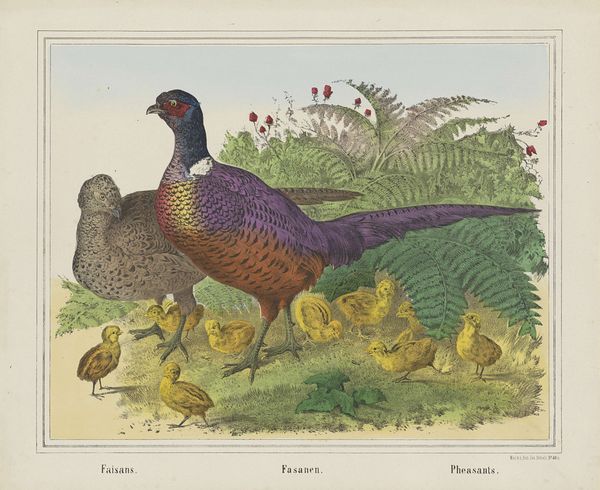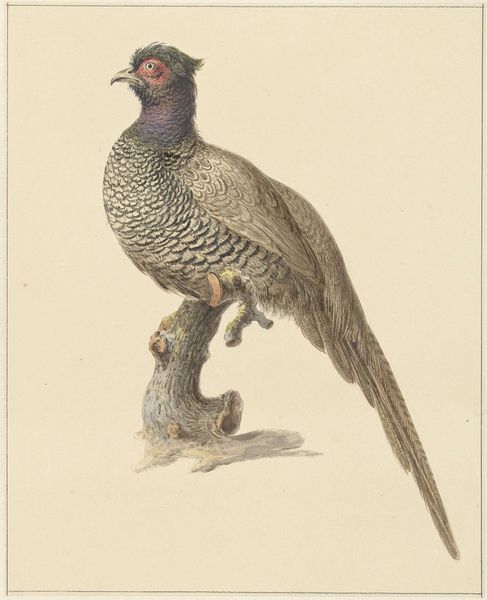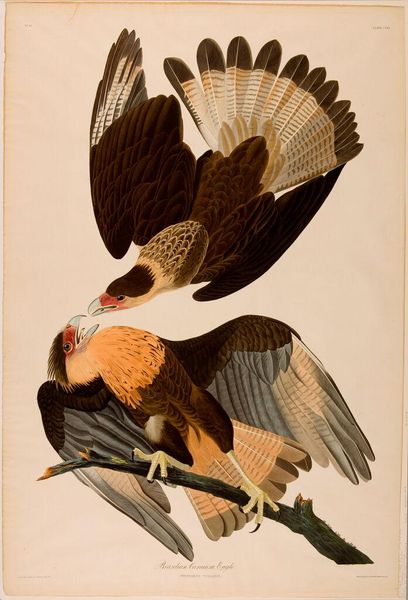
drawing, print, watercolor
#
drawing
# print
#
botanical illustration
#
watercolor
#
coloured pencil
#
botanical drawing
#
watercolour illustration
#
genre-painting
#
botanical art
#
realism
Dimensions: sheet: 37.9 x 55.9 cm (14 15/16 x 22 in.)
Copyright: National Gallery of Art: CC0 1.0
Curator: The subject here is an image of the Argus Pheasant, or Argusianus Argus, attributed to W. Hart, sometime between 1850 and 1883. It is executed using drawing and printmaking techniques, most likely including watercolor and coloured pencil. Editor: It's captivating, particularly the treatment of the plumage. The detail is stunning—a true feat of observation. The repetition of the ocelli across the wings almost creates a textile-like impression. Curator: The ‘eyes’ certainly draw the viewer in. Consider the symbolism – Argus, in Greek mythology, was a giant with a hundred eyes. Those eyes are said to be transferred to the peacock’s tail. It suggests vigilance, all-seeing awareness, perhaps even a divine perspective. Editor: Yet it’s interesting how this detailed representation is created through labor-intensive methods, suggesting something very earthly. The colored pencil layering, the potential printing processes involved…we see human endeavor inscribed in this almost divine symbolism. Were these illustrations aimed at scientific study, popular consumption, or both, I wonder? Curator: Likely both! The rise of natural history illustration in that period was driven by colonial exploration, scientific curiosity, and a growing public fascination with the exotic. So this detailed depiction fed multiple appetites: for knowledge, for spectacle, even for power, considering these images would circulate back to European centers. Editor: Exactly. The image functions as more than just a beautiful representation; it acts as a conduit, mediating the viewer’s understanding of the bird and, by extension, its environment, maybe the broader world. The ‘how’ and ‘why’ something is made becomes equally compelling to the ‘what’ of its depiction. Curator: Ultimately, that relationship is what lends these works their lasting power; how they echo our complex relationship to the world around us and to knowledge itself. Editor: Precisely! It leaves me pondering not just the beauty of the pheasant, but the entire system that allowed its representation and dissemination through artistry and industry.
Comments
No comments
Be the first to comment and join the conversation on the ultimate creative platform.
